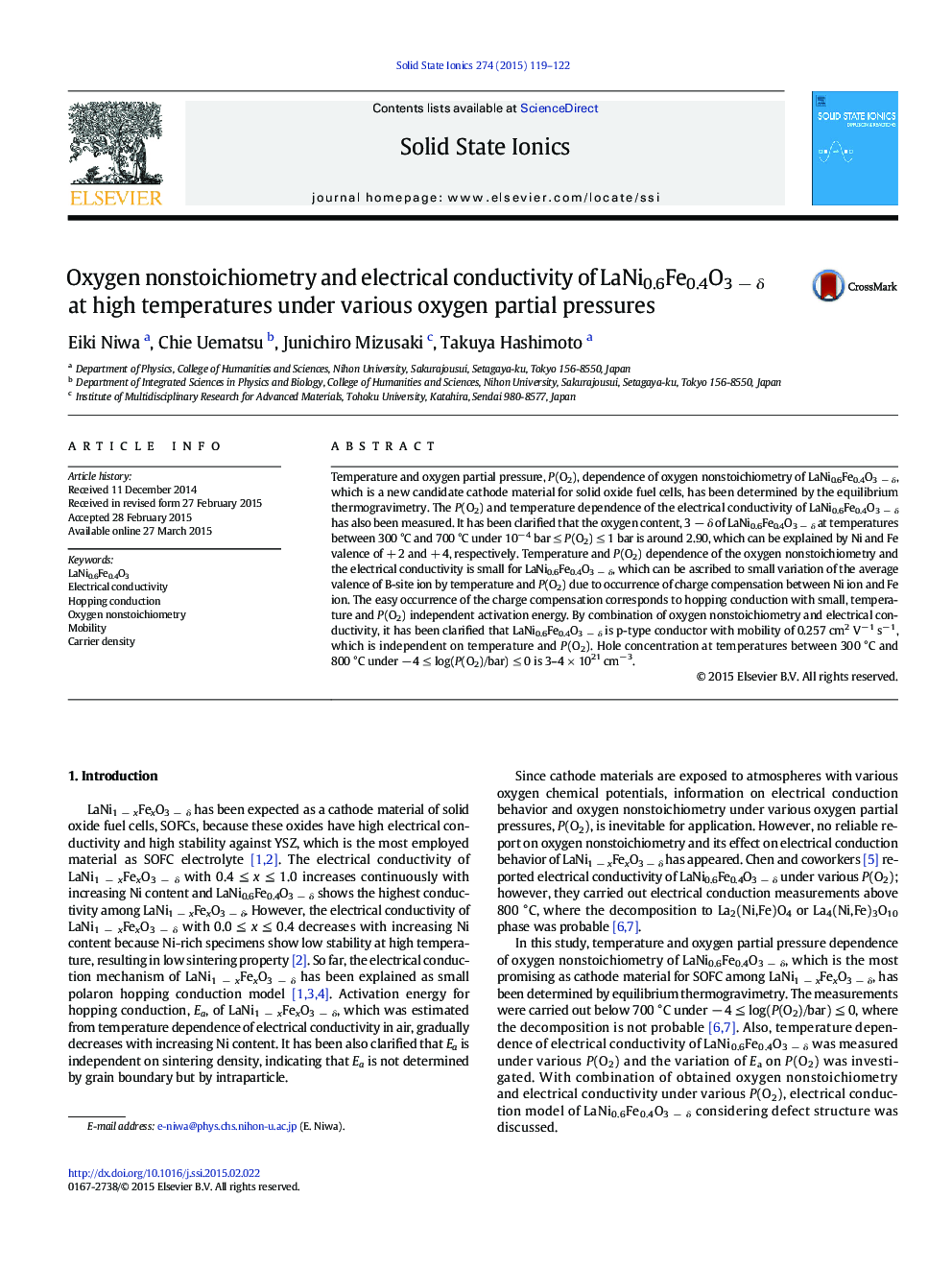| Article ID | Journal | Published Year | Pages | File Type |
|---|---|---|---|---|
| 1293627 | Solid State Ionics | 2015 | 4 Pages |
•Electrical conductivity and oxygen content of LaNi0.6Fe0.4O3 − δ were investigated.•Hopping conduction mechanism with P(O2) independent Ea could be applied.•Oxygen content is around 2.90 between 300 °C and 700 °C under 10− 4 ≤ P(O2) ≤ 1 bar.•Small variation of 3 − δ is ascribed to charge compensation between Ni and Fe ions.•Hole mobility and carrier density were estimated from conductivity and 3 − δ.
Temperature and oxygen partial pressure, P(O2), dependence of oxygen nonstoichiometry of LaNi0.6Fe0.4O3 − δ, which is a new candidate cathode material for solid oxide fuel cells, has been determined by the equilibrium thermogravimetry. The P(O2) and temperature dependence of the electrical conductivity of LaNi0.6Fe0.4O3 − δ has also been measured. It has been clarified that the oxygen content, 3 − δ of LaNi0.6Fe0.4O3 − δ at temperatures between 300 °C and 700 °C under 10− 4 bar ≤ P(O2) ≤ 1 bar is around 2.90, which can be explained by Ni and Fe valence of + 2 and + 4, respectively. Temperature and P(O2) dependence of the oxygen nonstoichiometry and the electrical conductivity is small for LaNi0.6Fe0.4O3 − δ, which can be ascribed to small variation of the average valence of B-site ion by temperature and P(O2) due to occurrence of charge compensation between Ni ion and Fe ion. The easy occurrence of the charge compensation corresponds to hopping conduction with small, temperature and P(O2) independent activation energy. By combination of oxygen nonstoichiometry and electrical conductivity, it has been clarified that LaNi0.6Fe0.4O3 − δ is p-type conductor with mobility of 0.257 cm2 V− 1 s− 1, which is independent on temperature and P(O2). Hole concentration at temperatures between 300 °C and 800 °C under − 4 ≤ log(P(O2)/bar) ≤ 0 is 3–4 × 1021 cm− 3.
